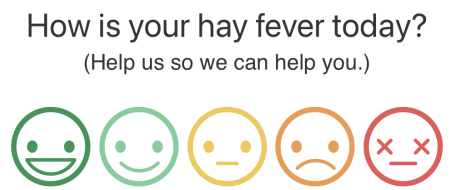How Melbourne felt this week
Nov. 10, 2023
Using real-time citizen data to better understand how environmental conditions affect the community

This week has been challenging for thousands of Victorians with hay fever and asthma. Throughout the week we have seen high and extreme grass pollen concentrations across the state and a number of different thunderstorm asthma warnings. But despite these warnings, it can be hard to grasp the effect these conditions have had on individuals.
For almost 10 years the Melbourne Pollen App has been gathering symptom data from its users. Individuals can rate their symptoms on a scale between 1 (no symptoms) and 5 (extreme symptoms) depending on how they feel. When a user tells us how they feel we also ask them to share with us their location.
The data we’ve been collecting has been invaluable in understanding how people feel in the face of different environmental conditions and whether being in different parts of the country affects individuals differently.
We were previously able to show that there is a strong link between the amount of grass pollen in the air and how people feel. That relationship was the same whether you were in Canberra or Melbourne. We also showed that it might be possible to generate personalised hay fever symptom forecasts for individuals using this data.
Today we wanted to share with our users and supporters how Melbourne has felt over the last few days in the face of challenging grass pollen levels and stormy conditions that led to the Department of Health issuing a thunderstorm asthma risk alert for parts of Victoria.
The animation below shows user-submitted symptom reports over the last few days in Melbourne. Each user's submission is marked by a dot, color-coded from blue for no symptoms to red for severe symptoms, providing a visual representation of the community's health during this period.
The animation highlights areas and times where symptoms were most intense. The severity of symptoms reported underscores the challenges faced by those with respiratory sensitivities during such extreme conditions and is helping us better understand how environmental conditions are affecting individuals.
We thank everyone who submitted their symptom data over the years and encourage all users to continue reporting their symptoms as we work together to better understand and manage these environmental health risks. Your input is vital in helping us provide accurate and timely information to the community.
We invite newcomers to Download the Melbourne Pollen app here and help us better understand how our environment affects us.


